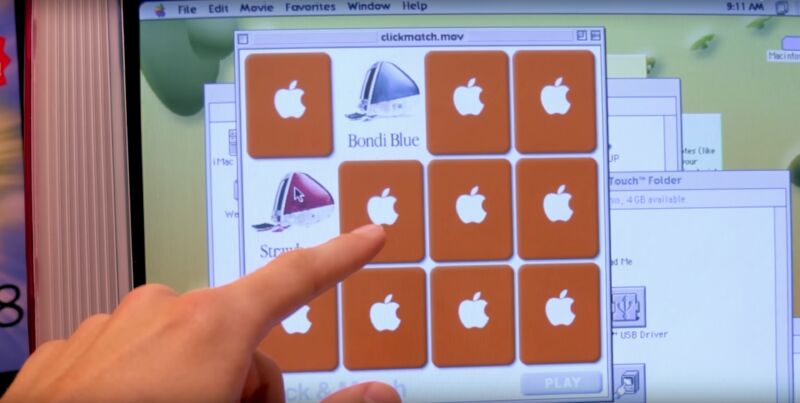
Two remarkable things appear in a recent Michael MJD video. One is an iMac G3 from 1999 that responds to not just touchscreen taps and drags, but also touch pressure. The other is a sticker on the side of the Strawberry tray-loading iMac, indicating that it was an "Engineering Prototype" from Elo, a company that was an official "Value Added Reseller" for Apple products.
The first iMac's release was 25 years ago last month. The device was a breakthrough on many levels. The transparent brightly colored plastic, the streamlined shape with rounded corners, and the bold-for-the-time choice to forgo floppy drives and myriad other PC ports made the G3 a style icon, to the point where the G3 is part of the Museum of Modern Art's permanent collection. It rebuilt and fortified Apple's position in the tech landscape. And, not for nothing, it kicked off an era-defining surge in transparent design.
The iMac G3 heralded some of Apple's future strategies and focus, but the company and its business model contained many aspects of an earlier era. Elo, a company that continues to make touchscreens for point-of-sale systems and other applications, turned some iMacs into touchscreen kiosks, with Apple's approval as a "Value Added Reseller." As Michael MJD points out in his video, the iMac made sense as a good-looking computer you could park on a surface and allow people to manipulate without a keyboard or mouse. What's more, Elo was only one of three known companies offering this kind of third-party touchscreen conversion.
Elo pulled this off in perhaps the most elegant fashion, fitting two transducers onto the standard CRT display, one to transmit and one to receive acoustic waves. Touching the screen disrupts the wave pattern and alters the amplitude at a specific point, from which Elo's tech can deduce an X/Y coordinate and even the Z-axis depth of pressure being applied. A controller board installed on the back of the CRT processes this information and passes it to the computer through an internally routed cable that connects to one of the computer's two standard USB ports.
Michael MJD is impressed with the technology but a bit less enthusiastic about using stock MacOS 8.6 (the one you can now run in a browser). The desktop controls and mouse targets are far too small to use with even a relatively precise touch panel. Had this later-stage iMac made it to release, it likely would have been running custom software with big, restaurant-ordering-style buttons. But it works and might have worked great, all for what was likely a price over $1,500.
Apple's Value Added Reseller (VAR) program still exists, with companies like WEI and others offering enterprise IT support, security, or other mostly software-related services for those looking for a white-glove setup. But the kind of value-added reselling that would see Apple allowing an outside company to put boards on the back side of its displays and sell them with the Apple logo still affixed? That has been gone for so long that it's an open question what VAR really means these days. (Hat tip to Hackaday where we originally saw Michael MJD's video, even if we can't find the original link now.)
reader comments
41